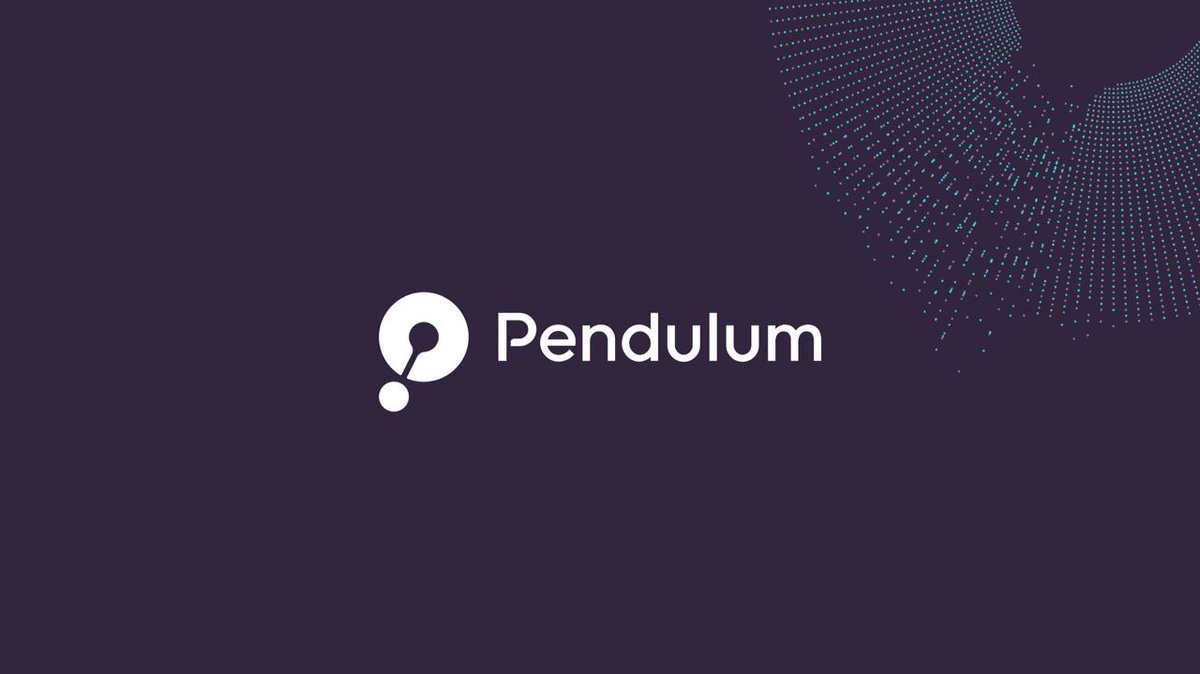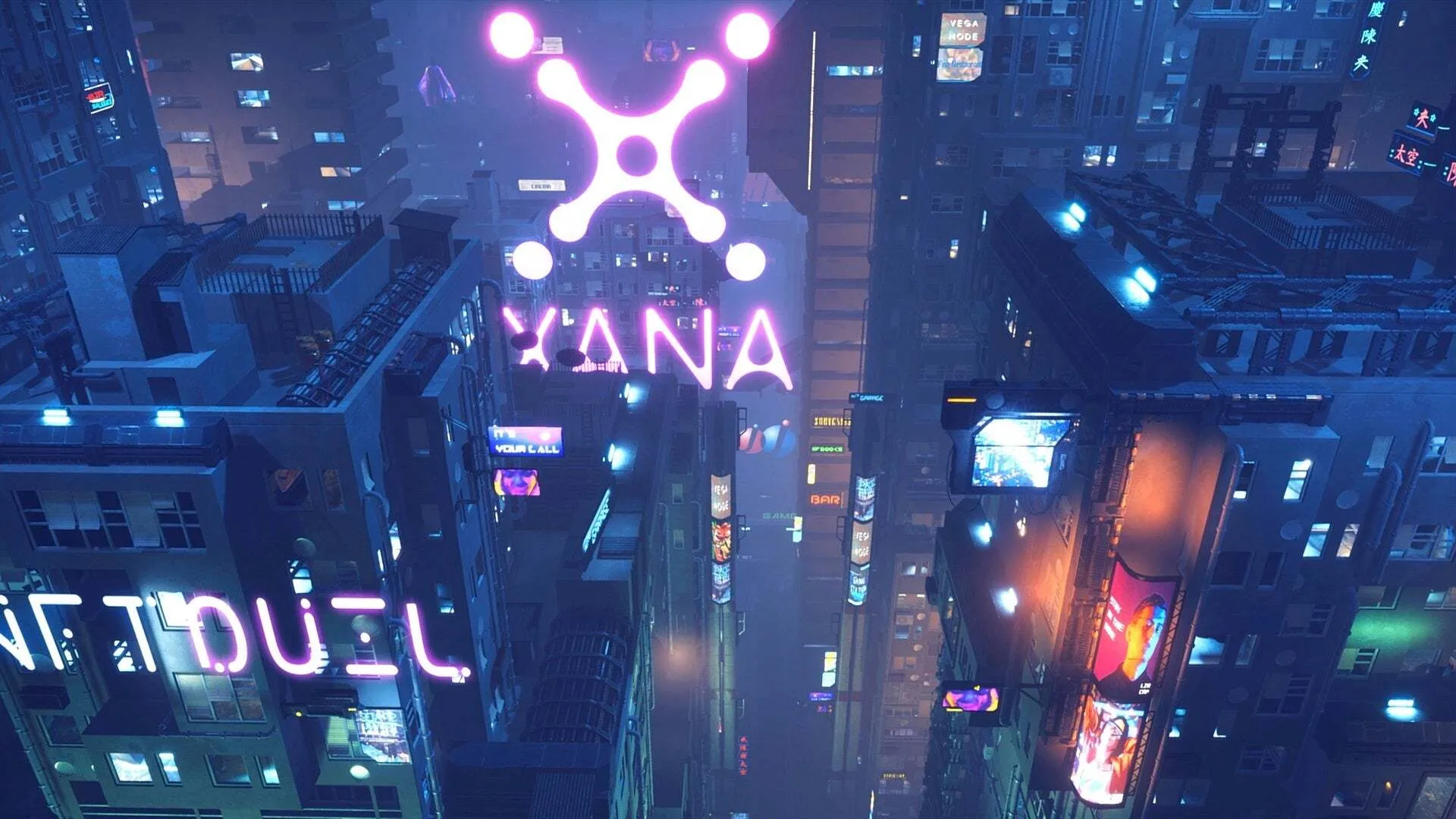
In the rapidly evolving blockchain landscape, the fragmentation of user experience and liquidity across different networks has become a critical challenge for Web3 adoption.
This comprehensive guide explores Mango Network (MGO), a groundbreaking multi-VM omnichain infrastructure that addresses these pain points through innovative technology combining Move language security with Ethereum Virtual Machine compatibility. Readers will gain deep insights into Mango’s unique architecture, tokenomics, real-world applications, and its potential to reshape the future of decentralized applications through seamless cross-chain interoperability.
Key Takeaways
- Multi-VM Innovation: Mango Network is the first Layer 1 blockchain to natively integrate both MoveVM and EVM within a single platform, eliminating complex bridging protocols while maintaining security and compatibility.
- Exceptional Performance: The platform achieves remarkable throughput of up to 297,450 TPS with two-second latency through its advanced Narwhal and Bullshark consensus mechanism.
- Omnichain Architecture: Unlike traditional multi-chain solutions that fragment liquidity, Mango Network enables unified state management and liquidity across multiple blockchain environments.
- Enhanced Security: By leveraging Move language’s resource-oriented programming model, the platform prevents common vulnerabilities like re-entry attacks and double-spending while providing formal verification capabilities.
- Comprehensive Tokenomics: MGO features a 10 billion token supply with strategic allocation including 20% for POS staking, 17% for ecosystem development, and 10% for community airdrops, ensuring sustainable long-term growth.
- Cross-Chain Communication: Advanced cross-VM protocols enable seamless data sharing and contract execution between different virtual machines without compromising security or user experience.
- Modular Design: The platform’s modular blockchain architecture separates core functions into specialized layers, enabling horizontal scaling and customization while maintaining decentralization.
- Real-World Applications: Mango Network supports diverse use cases including omnichain DeFi protocols, cross-chain asset management, decentralized identity services, and high-performance gaming applications.
Table of Contents
What is Mango Network (MGO Token)?
Mango Network is a Layer 1 blockchain platform featuring a multi-VM omnichain infrastructure designed to solve the fragmentation issues plaguing Web3 applications and DeFi protocols. By integrating the core advantages of OPStack technology with MoveVM, Mango Network creates an efficient blockchain ecosystem that supports cross-chain communication and multi-virtual machine interoperability, providing developers and users with secure, modular, and high-performance Web3 infrastructure.
The platform achieves remarkable performance with transaction processing speeds of up to 297,450 TPS while maintaining high standards of scalability and interoperability. Mango Network’s innovative approach combines the security features of the Move programming language with the widespread compatibility of the Ethereum Virtual Machine, creating a comprehensive solution for next-generation blockchain applications.
At its core, Mango Network operates through a sophisticated multi-VM architecture where MoveVM specializes in asset management, complex contract logic, and parallel execution, while EVM ensures broad compatibility with existing Ethereum-based smart contracts. This dual-VM approach is bridged through cross-chain communication protocols, enabling coordinated omnichain operations that transcend traditional blockchain limitations.
What is the Difference Between Mango Network and MGO Token
| Aspect | Mango Network | MGO Token |
|---|---|---|
| Definition | Complete Layer 1 blockchain platform and ecosystem | Native utility token powering the network |
| Function | Multi-VM omnichain infrastructure providing cross-chain communication | Network utility, governance, and security token |
| Scope | Entire protocol including consensus, storage, and applications | Specific digital asset within the ecosystem |
| Purpose | Enable seamless cross-chain interoperability and dApp development | Facilitate staking rewards, governance participation, and ecosystem incentives |
| Components | Includes MoveVM, EVM compatibility, consensus mechanisms, storage solutions | Single token with multiple utility functions |
| Governance | Platform governance through protocol decisions | Token holders participate in governance voting |
| Technical Layer | Infrastructure supporting multiple virtual machines and applications | Token operating within the infrastructure |
What Problems Does Mango Network Blockchain Solve?
1. Information and Liquidity Fragmentation
The current Web3 landscape suffers from severe fragmentation where users must navigate multiple blockchains, each with distinct ecosystems, wallets, and interfaces. This fragmentation creates inefficient capital allocation and poor user experiences, as assets and liquidity become scattered across different networks without seamless interaction capabilities.
2. Limited Cross-Chain Compatibility
Traditional blockchain networks operate in isolation, requiring complex bridging solutions that often compromise security and user experience. Applications deployed on multiple chains cannot share liquidity or state, leading to fragmented ecosystems where the same protocol must rebuild its user base and liquidity on each new network.
3. Technical Barriers Between Virtual Machines
Different virtual machines like EVM and MoveVM serve distinct purposes but lack native interoperability. EVM provides broad compatibility with existing Ethereum applications, while MoveVM offers superior security for asset management. The inability to leverage both systems simultaneously limits developers’ capabilities and forces difficult trade-offs between security and compatibility.
4. Scalability Without Sacrificing Security
Many blockchain solutions achieve scalability by compromising on security or decentralization. Mango Network addresses this trilemma by implementing a modular blockchain architecture that separates core functions—consensus, settlement, data availability, and execution—allowing each component to operate independently while maintaining collaboration.

Mango Network Development History and Vision
Mango Network emerged from the recognition that the blockchain industry’s focus had shifted from mere “high performance” to “comprehensive ecosystem integration.” As the industry moved beyond the “thousands of chains” trend, the growing complexity of decentralized applications highlighted the urgent need to break down barriers between blockchain ecosystems and enhance cross-chain compatibility.
The project was conceived as the multi-VM architecture gained widespread attention for its ability to address the industry’s pressing challenges through flexibility and adaptability across various ecosystems. The project emerged from industry recognition that blockchain development had shifted focus from pure performance to comprehensive ecosystem integration. Mango Network positioned itself at the forefront of this transformation, recognizing that future success would depend not just on transaction processing capacity but on ecosystem compatibility in complex cross-chain environments.
The development team chose to integrate Move language capabilities, originally developed by Meta’s Diem team, with Ethereum Virtual Machine compatibility to create a comprehensive solution. This decision was driven by Move’s proven security features for digital asset management and EVM’s established ecosystem presence, combining the best of both worlds in a single platform.
Mango Network Key Features: MGO Token and Multi-VM Technology
1. Multi-VM Parallel Execution Architecture
Mango Network’s revolutionary approach handles on-chain transactions through both MoveVM and EVM virtual machines operating in parallel. MoveVM dynamically schedules transactions based on state dependencies, ensuring non-conflicting transactions process simultaneously, while EVM maintains compatibility with existing Ethereum smart contracts. This architecture enables coordinated omnichain operations without forcing users to choose between security and compatibility.
2. Advanced Cross-Chain Communication
The platform employs sophisticated cross-VM communication protocols that enable seamless data sharing and contract execution between different virtual machines. Through event capture, data serialization, and contract invocation mechanisms, smart contracts in both EVM and MoveVM can call each other’s functions, allowing complete execution of cross-chain logic while maintaining security and consistency.
3. High-Performance Consensus Mechanism
Mango Network utilizes Narwhal as the mempool and Bullshark as the consensus engine, achieving throughputs exceeding 297,450 transactions per second with two-second latency. This DAG-based consensus approach separates transaction dissemination from consensus, enabling simple transactions to bypass consensus while complex transactions benefit from total ordering.
4. Enhanced Security Through Move Language
The platform leverages Move’s resource-oriented programming model, which treats digital assets as first-class resources with built-in scarcity guarantees. This approach prevents common vulnerabilities like re-entry attacks and double-spending while providing formal verification capabilities through the Move Prover tool.
5. Modular Blockchain Design
Mango’s modular architecture separates core blockchain functions—consensus, settlement, data availability, and execution—into specialized layers. This design enables horizontal scaling, reduces bottlenecks, and allows customization based on specific application requirements while maintaining security and decentralization.
Mango Network Crypto Applications and Use Cases
1. Omnichain DeFi Applications
Mango Network enables DeFi protocols to operate across multiple blockchains with unified liquidity and state management. Unlike traditional multi-chain deployments where each chain requires separate liquidity pools, Mango’s omnichain applications maintain unified state records and liquidity, allowing users to access services from any supported chain without fragmented experiences.
2. Cross-Chain Asset Management
The platform facilitates secure asset transfers and settlements across different blockchain networks through its multi-VM architecture. Assets can move seamlessly between EVM and MoveVM environments while maintaining security guarantees, enabling sophisticated financial applications that leverage the strengths of multiple blockchain ecosystems.
3. Decentralized Identity and Domain Services
Through MgoDNS, the platform provides distributed domain name services that connect traditional internet infrastructure with blockchain networks. This service enables decentralized identity management, supports traditional domain name resolution, and facilitates easier access to Web3 applications through familiar naming conventions.
4. High-Performance Gaming and Social Applications
Mango Network’s high throughput and low latency make it suitable for gaming applications requiring real-time interactions. The platform’s ability to handle complex state management through MoveVM while maintaining EVM compatibility allows game developers to create sophisticated experiences that leverage both security and accessibility.
MGO Tokenomics
Mango Network features a total token supply of 10 billion MGO tokens, strategically allocated to ensure long-term sustainable growth, user incentives, and ecosystem development. The comprehensive tokenomics framework is designed to support network security, governance, and ecosystem expansion over a 7-year gradual release schedule.

Token Allocation Breakdown:
- 20% POS Stake Pool – Dedicated to incentivizing validators and stakers to ensure network security and decentralization
- 20% Foundation – Supporting long-term protocol development and governance
- 17% Ecosystem Innovation Fund – Progressively allocated to support developers and ecosystem growth
- 15% Team & Early Contributors – Rewarding core development team and early supporters
- 15% Investors – Allocated to strategic investors and funding partners
- 10% Airdrop Programs – Split between 5% Testnet Airdrop and 5% Mainnet Airdrop for community rewards
- 3% Advisors – Supporting strategic guidance and partnerships
Unlocking and Release Schedule:
The tokenomics framework implements a gradual release mechanism over 7 years to ensure price stability and long-term ecosystem sustainability. A total of 1 billion tokens (10% of total supply) has been allocated to recognize and reward early supporters, with testnet participants able to claim their airdrop immediately after the Token Generation Event (TGE).
MGO tokens power staking rewards, governance participation, and ecosystem incentives, creating a comprehensive economic model that aligns stakeholder interests with network growth and security.
MGO Coin Functions in Mango Network Ecosystem
1. Network Security and Validation
MGO serves as the primary staking token for network validators who secure the blockchain through the delegated proof-of-stake consensus mechanism. Validators must stake MGO tokens to participate in block production and transaction validation, while delegators can stake their tokens with validators to earn rewards and support network security. The network allocates 20% of total supply (2 billion tokens) specifically for the POS Stake Pool to ensure robust validator incentives.
2. Transaction Fees and Gas Payments
The token functions as the native currency for all network operations, including transaction fees, smart contract execution costs, and data storage expenses. The gas pricing mechanism separates computation costs from storage costs, ensuring efficient resource allocation while maintaining network sustainability through fee collection.
3. Network Operations Support
MGO supports various network operations, including transaction processing and network maintenance. As the native token, MGO facilitates the economic mechanisms that enable the platform’s multi-VM architecture to function effectively.”
4. Governance Participation Rights
Token holders can participate in network governance decisions, including protocol upgrades, parameter changes, and validator selection processes. The governance system enables decentralized decision-making while ensuring that stakeholders with long-term interests in the network’s success guide its development.
5. Ecosystem Rewards and Incentives
MGO serves as the foundation for ecosystem growth through the 17% Ecosystem Innovation Fund and community reward programs. The token incentivizes developer participation, supports innovation grants, and rewards active community members through testnet and mainnet airdrop programs totaling 1 billion tokens.
Mango Network Roadmap and Future Development
Mango Network’s roadmap focuses on expanding its omnichain ecosystem through enhanced cross-chain integrations and developer tools. The platform aims to become the primary infrastructure for applications requiring seamless multi-chain functionality, positioning itself as the bridge between different blockchain ecosystems.
Future developments include expanding the number of supported blockchains through additional virtual machine integrations, enhancing the cross-chain communication protocols for improved efficiency and security, and developing more sophisticated tools for omnichain application development. The team plans to introduce advanced features like zero-knowledge proof integrations for enhanced privacy and implement additional scaling solutions to support even higher transaction throughput.
The platform’s evolution will also focus on ecosystem growth through strategic partnerships with major blockchain networks, DeFi protocols, and enterprise applications. By fostering a vibrant developer community and providing comprehensive tooling, Mango Network aims to establish itself as the standard for omnichain infrastructure in the Web3 space.
Long-term vision includes becoming the foundational layer for the next generation of decentralized applications that operate seamlessly across multiple blockchain networks, ultimately enabling a truly interconnected Web3 ecosystem where users and applications can interact without being constrained by individual blockchain limitations.

Mango Network vs Competitors: Blockchain Project Analysis
1. Competitive Landscape Analysis
Mango Network operates in the competitive landscape of Layer 1 blockchain platforms and cross-chain infrastructure solutions. Primary competitors include established multi-chain platforms like Polkadot, Cosmos, and various Layer 2 scaling solutions that attempt to address similar interoperability challenges.
However, most competing solutions focus on connecting separate blockchains rather than creating a unified multi-VM environment. Traditional cross-chain platforms typically require complex bridging mechanisms that introduce security risks and user experience friction, while Mango Network’s native multi-VM architecture eliminates many of these complications.
2. Mango Network’s Competitive Advantages
- Native Multi-VM Architecture: Unlike competitors that connect separate chains, Mango Network provides native support for multiple virtual machines within a single platform, eliminating the need for complex bridging protocols and reducing security risks associated with cross-chain transactions.
- Superior Performance Metrics: With demonstrated throughput exceeding 297,450 TPS and sub-second finality, Mango Network significantly outperforms most existing solutions in raw performance while maintaining security and decentralization.
- Move Language Security: The integration of Move programming language provides inherent security advantages for asset management that most competitors cannot match, as Move was specifically designed to prevent common smart contract vulnerabilities.
- Unified Liquidity Management: Mango’s omnichain applications can maintain unified state and liquidity across multiple environments, solving the liquidity fragmentation problem that affects multi-chain deployments on other platforms.
- Developer Experience: The platform provides familiar development environments for both Ethereum developers (through EVM compatibility) and security-focused developers (through MoveVM), lowering barriers to adoption while maintaining high security standards.

Where to Buy MGO Coin: Mango Network Trading Guide
MGO tokens are available for trading on MEXC, a leading cryptocurrency exchange that provides secure and reliable access to Mango Network’s native token. MEXC offers competitive trading fees, high liquidity, and comprehensive security measures to protect user assets during transactions.
The exchange supports multiple trading pairs for MGO, including MGO/USDT, providing flexibility for traders to enter and exit positions efficiently. MEXC’s advanced trading platform includes features such as spot trading, futures trading, and various order types to accommodate different trading strategies and risk preferences.

How to Buy MGO Token: Step-by-Step Trading Guide
- Create a MEXC Account: Visit the official MEXC website and complete the registration process with email verification
- Complete KYC Verification: Submit required identity documents to enable full trading functionality and higher withdrawal limits
- Deposit Funds: Transfer USDT or other supported cryptocurrencies to your MEXC wallet through the deposit function
- Navigate to MGO Trading: Use the search function to locate the MGO/USDT trading pair in the spot trading section
- Place Your Order: Choose between market orders for immediate execution or limit orders to set your preferred price
- Confirm Transaction: Review order details and confirm the purchase to complete your MGO token acquisition
- Secure Storage: Consider transferring tokens to a personal wallet for enhanced security if not actively trading
Conclusion
Mango Network represents a significant advancement in blockchain infrastructure through its innovative multi-VM omnichain architecture that addresses critical challenges in Web3 adoption. By seamlessly combining the security advantages of Move language with the widespread compatibility of Ethereum Virtual Machine, the platform creates unprecedented opportunities for developers and users to build and interact with truly omnichain applications.
The project’s technical achievements, including throughput exceeding 297,450 TPS and sophisticated cross-chain communication protocols, position it as a leading solution for the next generation of decentralized applications. With its focus on solving liquidity fragmentation and user experience challenges, Mango Network is well-positioned to play a crucial role in the evolution toward a more interconnected and accessible Web3 ecosystem.
Maximize Your Crypto Journey with MEXC’s Referral Program
Ready to grow your wealth while exploring cutting-edge projects like Mango Network? MEXC’s Referral Program offers an excellent opportunity to earn up to 40% commission by inviting friends to join the platform. Simply share your referral code, have friends sign up through your link, and automatically earn rewards when they trade. The program features instant commission distribution, up to 1,095 days validity period, and supports both spot and futures trading commissions. Whether you’re a casual trader interested in innovative blockchain projects or building a broader network, MEXC’s Referral Program provides a compelling way to enhance your crypto earnings while introducing others to the future of decentralized finance.

MGO Token airdrop coming soon! Get ready with MEXC’s exclusive preparation campaign!
Excited about Mango Network’s revolutionary multi-VM omnichain infrastructure? MEXC is preparing an exclusive campaign to help you get ready for the MGO Token Generation Event (TGE)! As Mango Network continues to develop its groundbreaking technology that combines Move language security with Ethereum Virtual Machine compatibility, this is your opportunity to stay ahead of the curve. Complete simple preparation tasks to position yourself for potential opportunities in this innovative platform that’s reshaping cross-chain interoperability. Don’t miss your chance to be part of the omnichain revolution – visit MEXC’s Airdrop+ page now and prepare for the future of multi-VM blockchain technology!
Join MEXC and Get up to $10,000 Bonus!



